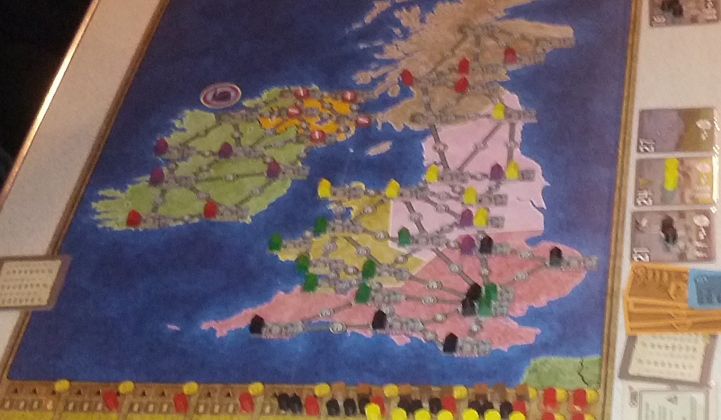The United States pretty much invented the term “demand response” to describe the business of turning down big power loads to help the grid avoid peak demand problems like blackouts. Today, of course, the term has expanded to include everything from energy-smart homes and commercial buildings to energy storage -- but the majority of the business remains in the big industrial and commercial sector, and in the United States.
Even so, we’re starting to see other parts of the world turn to demand response to help manage everything from grid instability and congestion to solar and wind power integration, albeit slowly. Outside the 40 gigawatts or so in the U.S., the second biggest market for DR would probably be the U.K., where the Short Term Operating Reserve (STOR) program has a little more than 800 megawatts, being served by a variety of companies including aggregators Flexitricity, a U.K. company launched in 2008, and EnerNOC, the U.S.’ biggest demand response company (here’s a full list of companies in the space).
Another new entrant is KiWi Power, which since 2009 has grabbed a significant share of the country’s available DR market -- about 100 megawatts, co-founder and director Ziko Abram told me in an interview this week. The London-based startup is backed by investors including Better Place backer Idan Ofer, and has raised an undisclosed amount of money, though Abram described it in the single-digit millions of dollars range.
With that, KiWi has built a demand response platform from soup to nuts -- including everything from GPRS-connected smart meters and load control devices, to a back-end system that manages all of it in real time, he said.
But perhaps more importantly, KiWi offers its customers a low-risk deal on the financial side, said Abram. The company’s DR services include a commitment to finance the installation, as well as guarantee that the customer won’t have to pay any penalties for missing a utility response call, and installation, he said.
“We tell the clients, we’re getting paid one dollar, you get X, and we get Y -- and we get our payment back in demand response payments,” he said. Abram didn’t get into details about how a startup with limited capital was managing to finance such deals upfront, though he did say that the company’s installations were capable of paying themselves back in a matter of months.
KiWi’s task, as with other demand response providers, is to turn down lights, chillers and fans, pumps, motors and other power-hungry gear on utility command, whether that’s a phone call or via new automated technologies like OpenADR. Current clients include a hospital, a hotel chain, and the distribution centers of Sainsbury’s, a big U.K. grocery chain, he said.
Like EnerNOC and other big DR aggregators, KiWi also taps generators at hospitals, data centers and other sites with backup power. The trick is to shift demand from peak times to off-peak times, he noted. The company has put together a list of ways that DR can pay for itself in cases like these, like making sure your quarterly tests of the backup generator happen to occur at the 5 p.m. afternoon peak, rather than at the middle of the night, he said.
There’s little doubt that the U.K. needs to grow its ability to turn down power for grid stability. Tightening regulations on coal-fired power plants are driving a shortfall in reserve margins, or the amount of generation needed for peaks and other emergencies, from about 14 percent this year down to about 4 percent by 2015. (Most other markets have seen less pressure, as power demand has dropped along with economic activity, though Texas could be facing a shortfall like the U.K.’s in coming years.)
The U.K.’s STOR program also requires participants to respond in twenty minutes, which is faster than most of the markets operating in the United States today. But the push toward automation is going to make things faster still, Abram said. Frequency regulation services require responses in minutes or seconds, and KiWi is working on delivering that speed of response from its current deployments, he said.
Already, about half of the company’s clients have automated their DR responses, so that they, or KiWi, can respond within minutes, he said. The cloud-based service can be managed by the customer or by KiWi itself. That move to remote building energy management is one also being followed by industry giants like Schneider Electric and Honeywell and startups like Blue Pillar, Viridity Energy and BuildingIQ, to name a few.
In the long run, KiWi sees itself exporting its business to other markets, including the United States, Abram said. The startup is working on pilot projects in other European countries, he said, though he wouldn't provide more details.



